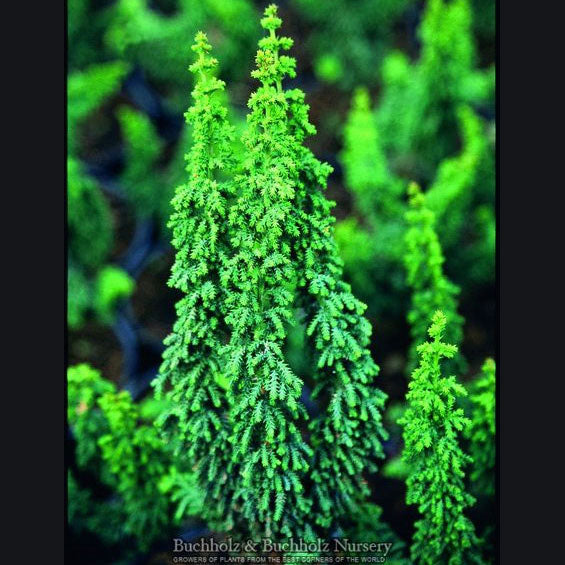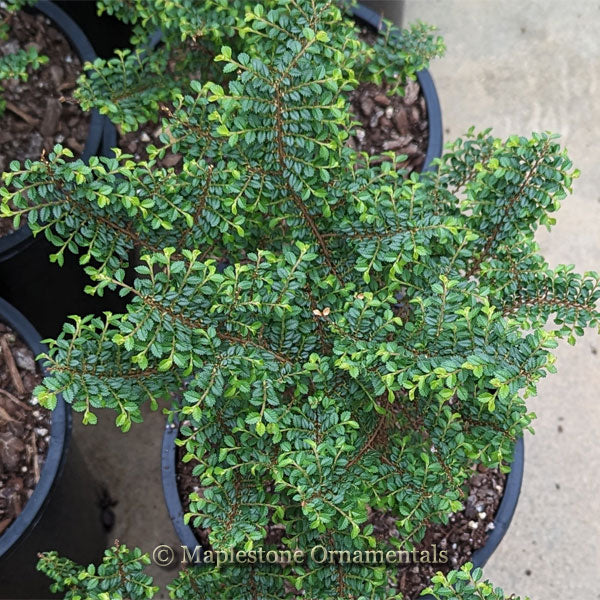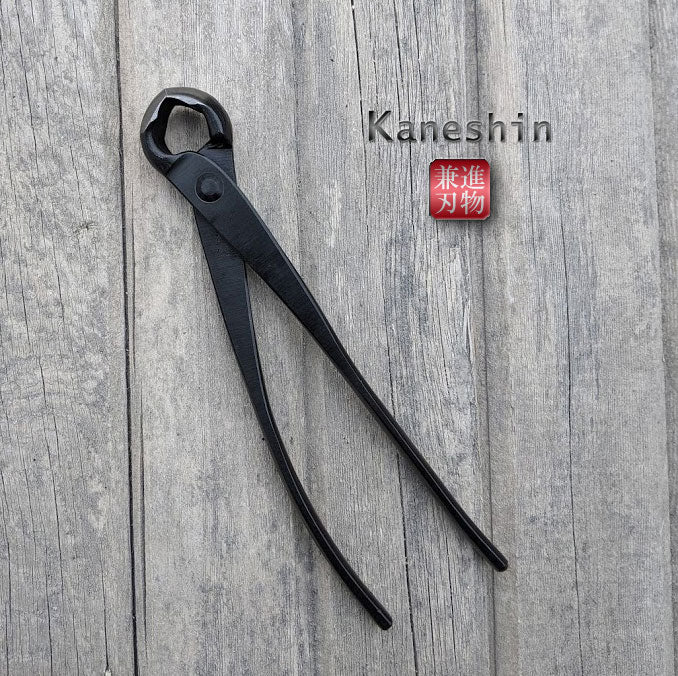Planting and Care
Japanese Maple Planting and Care
Once you receive your tree, you should immediately remove it from the plastic bag and place it in a shady spot. Placing the tree in full sun or strong wind will often result in severe shock to the tree.
During the summer months, you will see water holding gel at the bottom of the plastic shipping bag. These should be discarded. The purpose of this is to prevent drying out during shipping. It is not intended to be used when you plant the tree.
*Important: If you purchase a tree in early spring that already has leaves growing, DO NOT plant the tree in the ground until the threat of frost is over. We do not replace frost damaged trees.
Planting in Pots
When growing Japanese Maples in pots, the correct soil is key. Using a well drained soil medium is by far the MOST important factor when growing Japanese Maple in pots. A well drained medium will result in a well-aerated mix, which is so important with woody ornamentals, and especially important with Japanese Maples. Check your local Garden Center or Nursery for composted pine bark, perlite, pumice, or small lava pebbles. These are great additives to improve drainage. One example is mixing regular potting soil 50/50 with composted pine bark. This simple mix will greatly increase the drainage. If you search the internet about the best soil for potted Japanese Maples, you will see a lot of different opinions but one thing they will have in common is a soil that is well-drained.
- Do not use any kind of potting soil that contains fertilizer or water holding crystals.
- Do not use heavy soils in your potting mix. (soil from your back yard, bagged top soil, bagged compost).
- Do not use a container without drainage holes
- Do not bottom water the soil by leaving the whole pot submerged in water.
- Do not water the tree without first checking to see if the soil is actually moderately dry.
Planting in the Ground
When planting your new tree in the ground, it is important to choose the correct location. Many Japanese Maples prefer some shade. Though some varieties can handle full sun. Extra care will be needed to make sure the roots do not dry out during the first summer after you have planted it. When digging the planting hole, it is important to dig a hole that is 2-4 times wider than the root ball. Remember that most of the roots will spread out horizontally from the tree. If you have clay soil, remove as much of it as possible. It is important to remember that Japanese Maples are less picky about the soil for in-ground planting as opposed to the soil used in containers. This is because the roots are free to grow horizontally and find air pockets and nutrients. Soils to use when planting in the ground include screened top soil, bagged compost, Peat Moss, and Composted Pine bark. A mix of these ingredients will yield a very good planting mix. Some garden centers will sell a bagged "tree and shrub planting mix" and it is always worth the extra expense for premium planting soil. Be sure to raise the soil level a couple inches so the new maple is planted on a slight mound. This will allow the good drainage that is so important to Japanese Maples. It is also very important to mulch around the newly planted tree. Mulch will protect the root system by holding moisture in the soil and also provide nutrients as it decomposes.
- Do not create a bowl shaped "water catch" around your tree.
- Do not use fresh livestock manure when planting your tree.
- Do not use freshly milled (green) bark products in your mix. Only composted.
- Do not continuously water a freshly planted Japanese Maple. It is best to check the soil around the tree first to see if it needs watered. Over-watering a young Japanese Maple is the fastest way to kill it, especially during the cooler months.
Fertilizing
A low dose of time-release fertilizer in spring or early summer is also very beneficial. We sell small containers of time release fertilizer that is specially formulated for Japanese Maples. Avoid using liquid fertilizer. This type of fertilizer provides too much initial feed. Japanese Maples prefer more of a continuous low dose of feed during spring and summer. Fertilizing in late summer or fall is never a good idea. It is best not to stimulate fresh growth during the fall season because late growth will not have a chance to harden off before winter. It is always tempting to give your new tree lots of fertilizer but with Japanese Maples, less is more. It would be better not to fertilize at all then to over-fertilize. It's also important to remember that variegated type Japanese Maples can temporarily or permanently lose their variegation when given too much fertilizer. This is called "reversion". Some varieties are more prone to reversion than others.
Winter care for potted Japanese Maples
Winter is a great time to ship Japanese Maples because they are dormant and not easily stressed from the shipping process. If you purchase a Japanese Maple in winter, it is important to protect it from temperatures much below 30F. Storing the tree in an un-heated garage or shed is the best option. Do not be tempted to store the maple in your house. It needs to stay cold and dormant for the winter months, which is very important for the health of the tree.
Pruning
Although most Japanese Maples have a wonderful natural branch structure, pruning is a great way to form and train your tree to fit the look you want in the landscape. The best time to prune a Japanese Maple is in late summer. This time of year is best because there is much less sap flow and potential stress. DO NOT prune your Japanese Maple in winter. This can result in severe disease problems. Yearly maintenance pruning includes removing smaller dead twigs from your tree. Heavier pruning can be done every 2-4 years which includes general shaping and removing cross branches.
The best pruning and shaping is only possible with the correct tools. Concave Branch Cutters are the best choice for removing branches that are under 1/2" in diameter. For larger branches, bypass pruners or a fine tooth saw is a great choice for making a clean cut that is flush with the trunk. Please visit our hardware page for a wonderful selection of high quality pruning and bonsai tools.
Also remember that named varieties of Japanese Maples are grafted onto a vigorous green leaf understock. It is important to know where the graft union is on your tree and promptly remove any new growth below the graft union. Although a fresh green shoot growing below the graft union may look pretty, it will be extremely vigorous and eventually take over the tree.
If you have further questions about Japanese Maple care, please use the contact us form. We are here to help.







